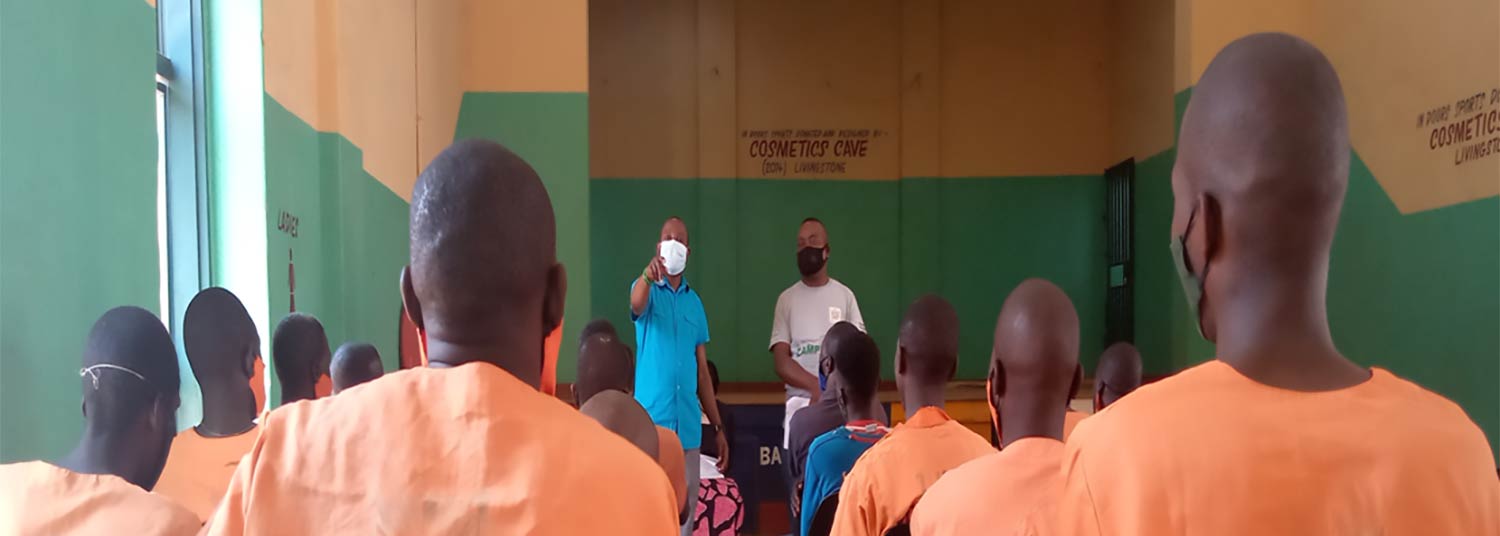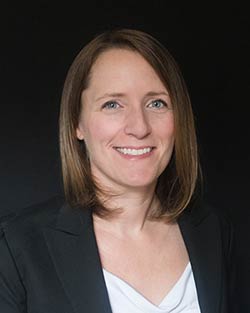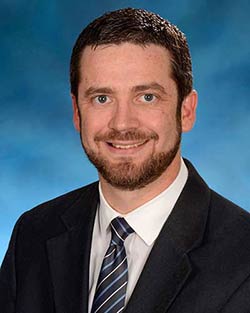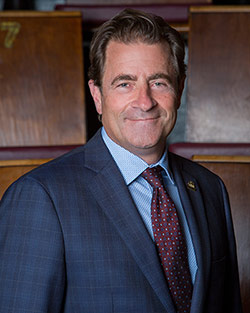February 07, 2023 | Jennifer Gonzales

A recent study performed in Zambia by University of Maryland School of Medicine’s (UMSOM) Institute of Human Virology researchers found that high uptake of HIV preventative medicine, known as pre-exposure prophylaxis (PrEP), is possible in prison populations with adequate resources and support from the criminal justice health system.
In Sub-Saharan Africa, HIV infection disproportionately affects people detained within the criminal justice system. These vulnerable populations may not access regular medical care before and during incarceration.
Published in the January 2023 issue of The Lancet HIV, the research team provided evidence of a model HIV prevention with at-risk populations that could possibly be extended to other criminal justice facilities, as many of the issues faced by Zambian prisoners are universal to prisoners worldwide.
 "Our results show it is feasible to deliver PrEP in diverse criminal justice settings where other HIV prevention commodities, such as condoms and lubricants, are prohibited,” said epidemiologist Brianna R. Lindsay, MPH, PhD, Director of Health Programs at the Center for International Health, Education, and Biosecurity (Ciheb) at the Institute of Human Virology at UMSOM. “The approach was well received by justice-involved individuals, demonstrating high uptake among those eligible. To our knowledge, this is the first description of PrEP service delivery for people who are incarcerated in criminal justice settings in Sub-Saharan Africa."
"Our results show it is feasible to deliver PrEP in diverse criminal justice settings where other HIV prevention commodities, such as condoms and lubricants, are prohibited,” said epidemiologist Brianna R. Lindsay, MPH, PhD, Director of Health Programs at the Center for International Health, Education, and Biosecurity (Ciheb) at the Institute of Human Virology at UMSOM. “The approach was well received by justice-involved individuals, demonstrating high uptake among those eligible. To our knowledge, this is the first description of PrEP service delivery for people who are incarcerated in criminal justice settings in Sub-Saharan Africa."
In the study, the largest proportion of incarcerated people reached with HIV prevention services and initiated on PrEP were men between the ages of 25 and 29 years, consistent with the known demographics of the incarcerated population in Zambia. Prior to HIV testing, individuals were screened using a high-risk screening form. People who are incarcerated may be exposed to risks such as consensual and coerced sex, sexual violence, injection drug use, and tattooing. High-risk activity paired with other barriers to HIV prevention in prisons, including high inmate turnover, lack of health education, and the absence of HIV prevention tools, contributes to at least a 14 percent higher rate of infection than seen in the adult general population.
Funded by the U.S. President's Emergency Plan for AIDS Relief (USPFAR) through the U.S. Centers for Disease Control and Prevention (CDC), the study implemented PrEP through existing and previous projects that support HIV testing, and links participants, including people who are incarcerated, to treatment and service, such as the University of Maryland Baltimore-supported Community Impact to Reach Key and Underserved Individuals for Treatment and Support (CIRKUITS) and Zambia Community HIV Epidemic Control for Key Populations (Z-CHECK) programs. With an all-hands-on-deck approach, there was support for the study from all stakeholders, from the Correctional Service and Zambian Ministry of Health to the prison health committee and peer-led adherence support groups, to provide PrEP services.
 To ensure a stable and continuous supply of PrEP medication, trained personnel worked with Zambia Ministry of Health supply chain teams to assess stock levels and support the distribution of HIV prevention supplies.
To ensure a stable and continuous supply of PrEP medication, trained personnel worked with Zambia Ministry of Health supply chain teams to assess stock levels and support the distribution of HIV prevention supplies.
“We are honored to work with the Zambia Correctional Services and Ministry of Health to accomplish this initial implementation of PrEP at these facilities,” said Cassidy W. Claassen, MD, MPH, Associate Professor of Medicine and Principal Investigator for this study, and Technical Director for the Zambia County Office at the Institute of Human Virology at UMSOM. “This represents one of the first such implementations anywhere in the world and marks an important step forward in demonstrating successful HIV prevention protocols for people who are incarcerated. “
Data was collected between October 1, 2020, to March 31, 2021, from 16 Zambian criminal justice facilities, involving a total of 12,367 people (of all sexes) in the study. Of all those who tested HIV negative and were screened for PrEP, 67 percent considered high risk were eligible to initiate. All PrEP participants participated voluntarily, and care was taken to avoid undue coercion or incentives. PrEP participation exceeded 90 percent among those eligible.
 “Due to Ciheb’s collaborative efforts with our partners to control HIV infection in Zambia, we have been able to help bring the HIV prevention and treatment rates to 98% across the country, and now we are focusing on targeting this previously and traditionally ignored population of people in prisons,” said Manhattan Charurat, PhD, MHS, Professor of Medicine, Director of Ciheb, and Director of the Division of Epidemiology and Prevention at UMSOM’s Institute of Human Virology. “In many developing countries, it is much harder to institute plans for HIV interventions in prisons. However, we believe that our model can be successfully adapted to help control the spread and improve the health and well-being of inmates across the globe.”
“Due to Ciheb’s collaborative efforts with our partners to control HIV infection in Zambia, we have been able to help bring the HIV prevention and treatment rates to 98% across the country, and now we are focusing on targeting this previously and traditionally ignored population of people in prisons,” said Manhattan Charurat, PhD, MHS, Professor of Medicine, Director of Ciheb, and Director of the Division of Epidemiology and Prevention at UMSOM’s Institute of Human Virology. “In many developing countries, it is much harder to institute plans for HIV interventions in prisons. However, we believe that our model can be successfully adapted to help control the spread and improve the health and well-being of inmates across the globe.”
For future studies, the researchers plan to evaluate PrEP persistence and adherence, as well as the perceptions of people who are incarcerated regarding their HIV risk and preferences for combined HIV prevention services. They will also aim to assess and support PrEP adherence and persistence after these people are released from prison.
“In many developing countries, both HIV and homosexuality are highly stigmatized, making HIV interventions in prisons that much harder to enact," said Robert Gallo, MD, The Homer & Martha Gudelsky Distinguished Professor in Medicine, Co-Founder and Director of the Institute of Human Virology at the University of Maryland School of Medicine and Co-Founder of the Global Virus Network (GVN) and Chair of the GVN’s Scientific Leadership Board. “True to Ciheb’s mission and history, whose foundation dates back nearly two decades in our Institute, this team continues to promote health equity in resource-limited settings.”
 "There is an urgent need for health equity for all members of society. With almost 400,000 people globally incarcerated who are living with HIV, including 18,000 in the United States alone, controlling the spread of HIV in the prison system translates to healthier communities," said Dean Mark Gladwin, MD, who is also Vice President for Medical Affairs, University of Maryland, Baltimore, and the John Z. and Akiko K. Bowers Distinguished Professor. "What the team has accomplished in this study will hopefully accelerate further changes to the prison healthcare systems in Zambia and around the globe. "
"There is an urgent need for health equity for all members of society. With almost 400,000 people globally incarcerated who are living with HIV, including 18,000 in the United States alone, controlling the spread of HIV in the prison system translates to healthier communities," said Dean Mark Gladwin, MD, who is also Vice President for Medical Affairs, University of Maryland, Baltimore, and the John Z. and Akiko K. Bowers Distinguished Professor. "What the team has accomplished in this study will hopefully accelerate further changes to the prison healthcare systems in Zambia and around the globe. "
The study was funded by grant 6NU2GGH002123-02-07 by the CDC.
About the Institute of Human Virology
Formed in 1996 as a partnership between the State of Maryland, the City of Baltimore, the University System of Maryland, and the University of Maryland Medical System, the IHV is an institute of the University of Maryland School of Medicine and is home to some of the most globally recognized and world-renowned experts in all of virology. The IHV combines the disciplines of basic research, epidemiology, and clinical research in a concerted effort to speed the discovery of diagnostics and therapeutics for a wide variety of chronic and deadly viral and immune disorders, most notably HIV, the virus that causes AIDS. For more information, visit ihv.org and follow us on Twitter @IHVmaryland.
About the University of Maryland School of Medicine
Now in its third century, the University of Maryland School of Medicine was chartered in 1807 as the first public medical school in the United States. It continues today as one of the fastest growing, top-tier biomedical research enterprises in the world -- with 46 academic departments, centers, institutes, and programs, and a faculty of more than 3,000 physicians, scientists, and allied health professionals, including members of the National Academy of Medicine and the National Academy of Sciences, and a distinguished two-time winner of the Albert E. Lasker Award in Medical Research. With an operating budget of more than $1.3 billion, the School of Medicine works closely in partnership with the University of Maryland Medical Center and Medical System to provide research-intensive, academic and clinically based care for nearly 2 million patients each year. The School of Medicine has nearly $600 million in extramural funding, with most of its academic departments highly ranked among all medical schools in the nation in research funding. As one of the seven professional schools that make up the University of Maryland, Baltimore campus, the School of Medicine has a total population of nearly 9,000 faculty and staff, including 2,500 students, trainees, residents, and fellows. The combined School of Medicine and Medical System (“University of Maryland Medicine”) has an annual budget of over $6 billion and an economic impact of nearly $20 billion on the state and local community. The School of Medicine, which ranks as the 8th highest among public medical schools in research productivity (according to the Association of American Medical Colleges profile) is an innovator in translational medicine, with 606 active patents and 52 start-up companies. In the latest U.S. News & World Report ranking of the Best Medical Schools, published in 2021, the UM School of Medicine is ranked #9 among the 92 public medical schools in the U.S., and in the top 15 percent (#27) of all 192 public and private U.S. medical schools. The School of Medicine works locally, nationally, and globally, with research and treatment facilities in 36 countries around the world. Visit medschool.umaryland.edu
Contact
Jennifer Gonzales
Communications and Public Relations Manager
Jennifer.Gonzales@ihv.umaryland.edu
cell: 804-695-6058
